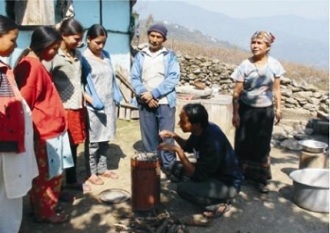Thirty-four experts, academics, and entrepreneurs from Laos, Cambodia, Vietnam, and Thailand gathered to discuss how to create a cleaner, more efficient stove during the Stove Design & Testing Workshop in Vientiane, Laos on March 14-16. Participants shared methods to design, evaluate, and commercialize improved-stoves that use less fuel and produce less smoke.
Exposure to smoke from traditional cookstoves and open fires—the primary means of cooking and heating for nearly three billion people in the developing world—causes 1.9 million premature deaths annually, with women and young children the most affected. Cookstove smoke contributes to a range of chronic illnesses and acute health impacts such as early childhood pneumonia, emphysema, cataracts, lung cancer, bronchitis, cardiovascular disease, and low birth weight. In Laos, diseases caused by cookstoves kill more people per year than car crashes or malaria.
Governments and NGOs across the Lower Mekong Region are increasingly aware of the links between cookstoves and health and productivity, with Thailand and Cambodia already actively invested in more efficient cookstove projects, and a key objective of the Vientiane workshop was to build networks between major regional stakeholders in this issue. The workshop was the also the first step in a phased process that will eventually lead to the distribution of 500,000 improved stoves over the next eight years in Laos.
[click to continue…]



